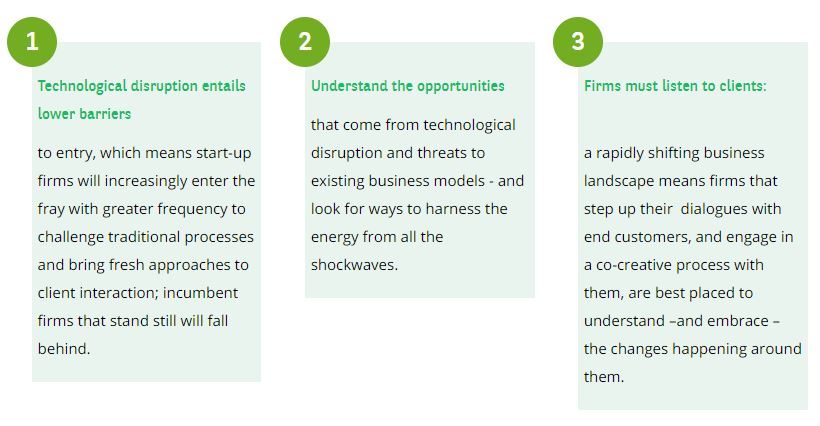What happened to the internal file- and message-sharing aid developed by the Massachusetts Institute of Technology (MIT) in 1965?
It eventually became a worldwide communications tool that today we would find difficult imagining ourselves without: email. Like all innovative technology, it was a paradigm shift that entailed new, more effective ways of working and collaborating.
What if we don’t embrace disruption?
The fate of Kodak serves as a cautionary tale. Selling photographic film was its core business, and one in which it was dominant. It even had the foresight to embrace new technologies as cameras went digital and printing gave way to digital sharing: a Kodak engineer was the first to create a digital camera prototype as far back as 1975, and it was Kodak that acquired the photo-sharing site, Ofoto, in 2001.But while Kodak could see the disruptive forces shaking the industry, its capacity to adapt to these shocks still proved inadequate – because it did not embrace them enough. Kodak saw digital photography as a new business, rather than as the new business. (Ofoto was seen as a way to get people to print more photos; in a parallel universe, with the right vision and a bit of luck,perhaps it could have become a place for people to share updates about their lives, like Facebook.)
From the point of view of the dominant incumbent, contemplating a world without film was perhaps a cognitive step too far. As digital photography migrated to smartphones, Kodak had little choice but to throw in the towel and in 2012 it filed for Chapter 11 bankruptcy protection.
What three lessons can we learn from this?

So what is co-creation?
Co-creation is about engaging and collaborating with stakeholders to harness their creativity in the process of product development. It is a realisation that customers, intermediaries and suppliers – including fintechs and other start-ups – all have invaluable insights to offer. The emergence of the popularity of hackathons is a testament to the power of this co-creation.
It is about gaining a better understanding of clients’ needs and exploring the pain points, putting together a business case by deploying the latest technology and delivering the solution as quickly as possible.
In a second example, in loan syndication BNP Paribas started a co-creation process with clients to understand the pain points around the lack of standardised documentation. The result, “Smart-f”, is a central platform under current development that will save a lot of time and cost: the aim is make bank lead mandates and RFPs a much smoother process, cutting the total time from eight to two weeks.

Guillaume Lemarchand, Chief of Staff in Financing Solutions at BNP Paribas, explains: “The ‘Smart-f’ project, set up by a group of volunteers working in ‘agile’ mode, was incubated in an internal lab. It enables clients to be involved and to build long-term partnerships. A dozen clients volunteered to help us develop this new product.”[1]
Both MyCollat and Smart-f demonstrate the need to embrace disruption, which ultimately means greater efficiency, better connectivity to clients and, crucially, a shift in mindset. They are an acknowledgment that all parties – whether customers, intermediaries or suppliers – have expertise to bring to the table. The test is how to harness it – and we at BNP Paribas are certainly doing so, working on numerous on-going initiatives with start-ups from the fintech world and beyond.
Harness the power!
Standing still is not an option. Innovation has to be a given if we are to harness the power of digitalisation and exploit the opportunities it offers. Our focus must always be on the customer experience. The remarkable pace of change we see all around us promises great potential; how we realise this potential will be decisive – and co-creation is a large part of the story.[1] BNP Paribas Group Annual Report, page 63